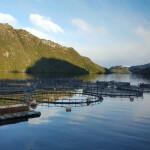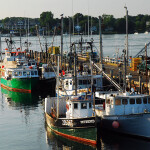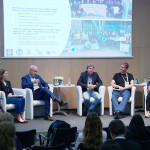While aquaponics – the growing of fish and plants together – is not a new concept, indeed it has been used on the paddy fields in parts of Asia for centuries; the megatrend of growing urbanization, forecast by the Food and Agriculture Organization of the United Nations (FAO) to reach 70 percent by 2050, and the need to meet the increasing population’s rising demand for high-quality protein is making this alternative food production method all the more relevant.
In a nutshell, modern aquaponics utilizes recirculating aquaculture system (RAS) technology to grow fish and plants in closed loop production systems. The only notable inputs into these operations are the fish food and the energy required for the pumps and water heaters. There’s no soil and there are no waste by-products – the fish waste fertilizes plants while the plants purify the water for the fish.
In recent years, research companies have created several such systems around the world to show that they can be made commercially viable. Among them is the start-up business GrowUp Urban Farms, founded in 2013 by Kate Hofman and Tom Webster, which is aiming to go a step further and prove that urban aquaponic farms can be an important food resource for local markets.
To show the general public and potential investors that through a RAS system fish and plants can be grown together on the market’s doorstep successfully and sustainably, this young company built a “GrowUp Box” demonstration farm, constructed from an up-cycled shipping container. More than GBP 16,500 (EUR 22,677; USD 24,753) was raised for the construction of the GrowUp Box through a Kickstarter crowd-funding initiative.
With considerably more investment, it has since graduated onto “Unit 84,” a full-scale commercial farm within a warehouse facility on an industrial state in East London that had stood empty for two years. This farm began harvesting a few months ago and is now supplying herbs, salads, micro-greens and tilapia to local restaurants and small retailers – essentially becoming the capital’s first commercial aquaponics farm.
Hofman explained that GrowUp chose tilapia as its fish for a number of reasons, among them its fast rate of growth, its flexibility in the kitchen, and because it is an omnivorous species and therefore doesn’t need animal protein in its feed.
In volume terms, Unit 84’s 6,000 square feet of growing space, incorporating a stacked vertical system with LED lighting for the plants, has the capacity to produce around 20 metric tons (MT) of salads and herbs (enough for 200,000 salad bags) and 4 MT of fish each year. The facility also has a small visitors’ center to show people how the products are grown.
But most importantly of all, the farm is providing clear evidence that aquaponics can help feed meet the growing demand for high-quality, local produce from both traders and consumers. This is in addition to providing local employment, and the company is providing training in a number of areas, including fish husbandry.
Hofman revealed that Unit 84 will probably provide the system blueprint for the construction of a bigger farm in a different area of London, and following that GrowUp would like to create a facility in another U.K. city, perhaps one well away from the coast such as Birmingham.
Looking further down the line, GrowUp would like to explore the potential for its model in overseas markets.
The best thing about doing this type of operation – “in a box, inside a warehouse” – is that you can do it almost any city in any part of the world, she said.
The system’s biggest input is electricity, and to keep in line with the company’s sustainability ethos, the farm is powered with energy from renewable sources. This brings Hofman onto one aspect of fish production that she would like to change – the feed. At the moment, a standard tilapia diet is fed to GrowUp’s fish, but she would like to see greater advancement of feed ingredients, particularly in the area of insect-based diets, as she believes that in terms of sustainability, it’s the next natural step for the aquaculture industry to take.
Currently, though, insects fall under the same EU regulations as traditional livestock, whereby once they have been killed, dried or otherwise processed, their protein cannot be fed to animals destined for human consumption.
While Hofman concedes there’s a long way for urban aquaponic farming to go before it reaches a scale that can make a big impact in food production, she is confident that, given time, it can make a difference “growing local food to meet local demand.”
Photo credit: Mandy Zammit






